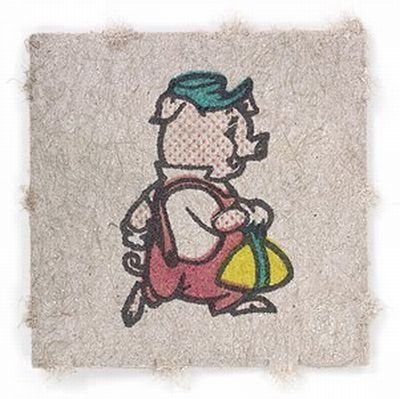|
|
LSD Blotter Paper Art
|
LSD is an ergoline derivative. It is commonly synthesised by reacting diethylamine with an activated form of lysergic acid. Activating reagents include phosphoryl chloride and peptide coupling reagents. Lysergic acid is made by alkaline hydrolysis of lysergamides like ergotamine, a substance derived from the ergot fungus on rye, or from ergine (lysergic acid amide, LSA), a compound that is found in morning glory (Ipomoea tricolor) and Hawaiian baby woodrose (Argyreia nervosa) seeds.
LSD is a chiral compound with two stereocenters at the carbon atoms C-5 and C-8, so that theoretically four different optical isomers of LSD could exist. LSD, also called (+)-D-LSD, has the absolute configuration (5R,8R). The C-5 isomers of lysergamides do not exist in nature and are not formed during the synthesis from D-lysergic acid. Retrosynthetically, the C-5 stereocenter could be analysed as having the same configuration of the alpha carbon of the naturally occurring amino acid L-tryptophan, the precursor to all biosynthetic ergoline compounds.
However, LSD and iso-LSD, the two C-8 isomers, rapidly interconvert in the presence of bases, as the alpha proton is acidic and can be deprotonated and reprotonated. Non-psychoactive iso-LSD which has formed during the synthesis can be separated by chromatography and can be isomerized to LSD.
A totally pure salt of LSD will emit small flashes of white light when shaken in the dark. LSD is strongly fluorescent and will glow bluish-white under UV light.
|
|









